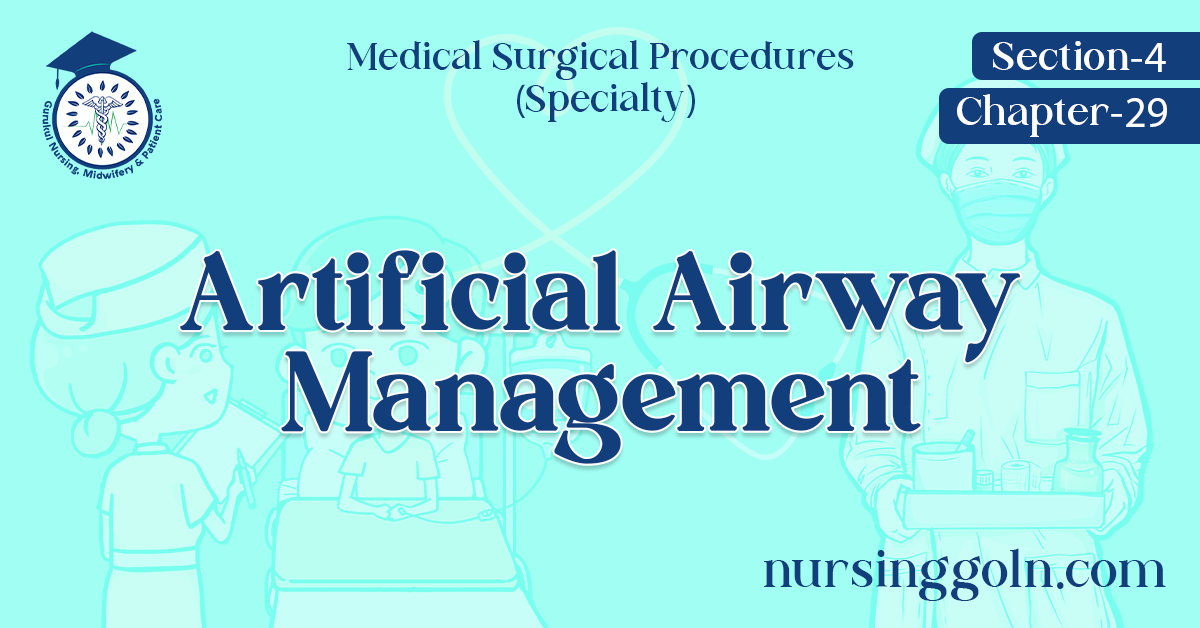Today our topic of discussion is Artificial Airway Management.
Artificial Airway Management

ARTIFICIAL AIRWAY MANAGEMENT
Definition
An artificial airway is a tube that is inserted at the mouth or nose or level of the second or third tracheal ring to permit mechanical ventilation and facilitate secretion removal. The distal end of the tube is located in the trachea below the vocal cords (Fig. 29.5),
Indications
- Acute respiratory failure, central nervous system (CNS) depression, neuromuscular disease, pulmonary disease, chest wall injury
- Upper airway obstruction
- Anticipated upper airway obstruction from edema or soft tissue swelling due to head and neck trauma Some. postoperative head and neck procedures involving the airway facial or airway burns, decreased level of consciousness
- Aspiration prophylaxis
- Fractured cervical vertebrae with spinal cord injury. requiring ventilatory assistance.

Endotracheal Route of Insertion
Tube can be inserted through nose or mouth. A cuff is always located at the distal end of the tube.
- Orotracheal: Insertion of an oral tube is technically easier, since it is done under direct visualization. Disadvantages are increased oral secretions, decreased patient comfort, difficulty with stabilization, and inability of the patient to use lip movement as a communication means
- Nasotracheal: May be more comfortable to the patient and is easier to stabilize. Disadvantages are that blind insertion is required, possible development of pressure necrosis of the nasal airway, sinusitis and otitis media.
Tube Types (Fig. 29.6)
- Vary according to length and inner diameter in millimeters
- Vary according to cuff, most are high volume, low pressure with self-sealing inflation valves or the cuff may be foam rubber (foam cuff)
- Vary according to composition and cuff type synthetic teflon, nylon, polyvinyl chloride, polyethylene or silastic. May or may not have inner cannula. Usually are cuffed

- Tubes with high volume, low pressure cuff self-sealing inflation valves and with or without inner cannula
- Flange to limit depth of insertion
- Pressure limiting cuffs
- Polyurethane foam filled cuffs
- Speaking tracheotomy tube
- Fenestrated.
- Usual sizes for adult are 6.0, 7.0, 8.0, and 9.0 mm.
Read more:
